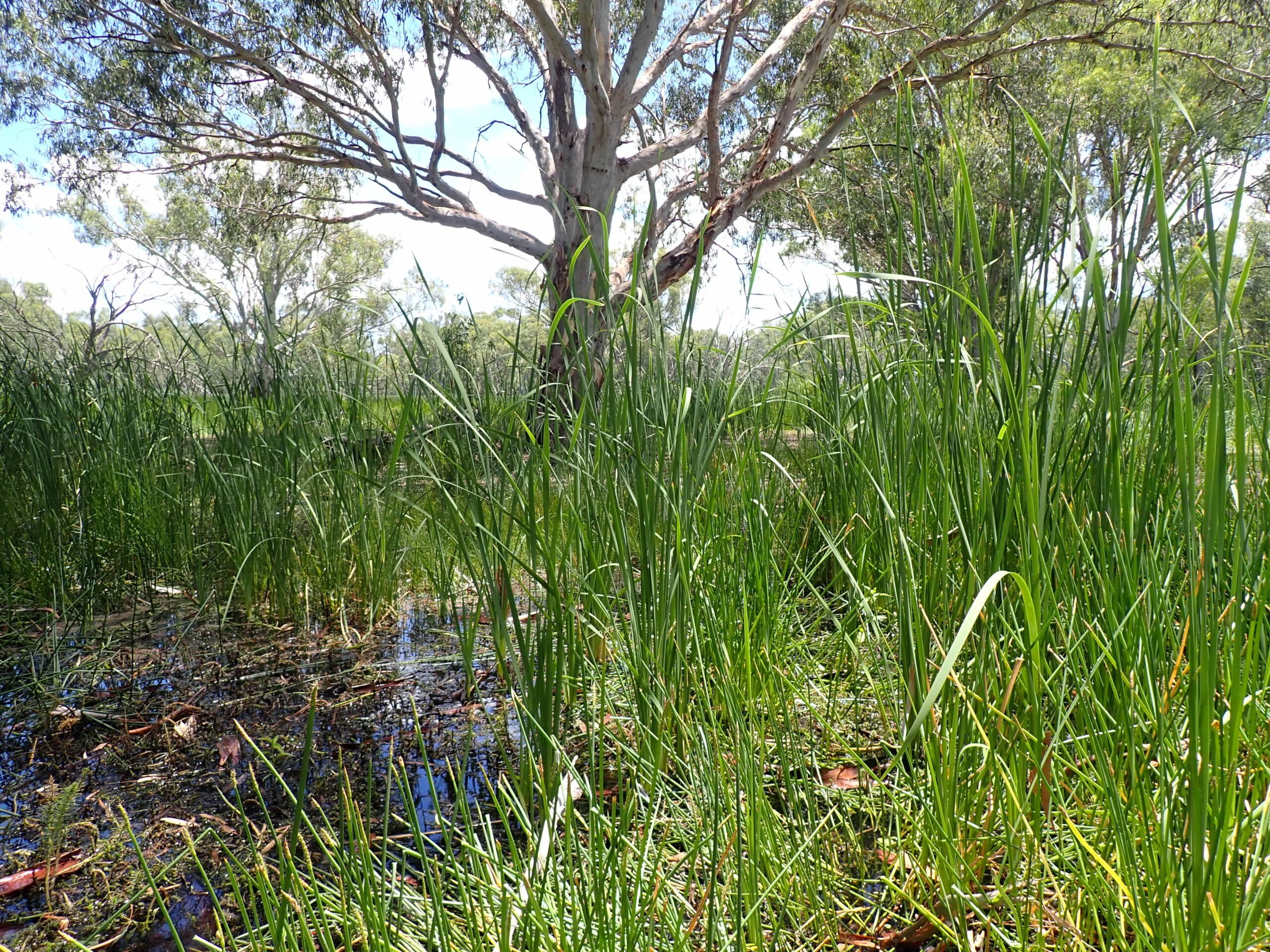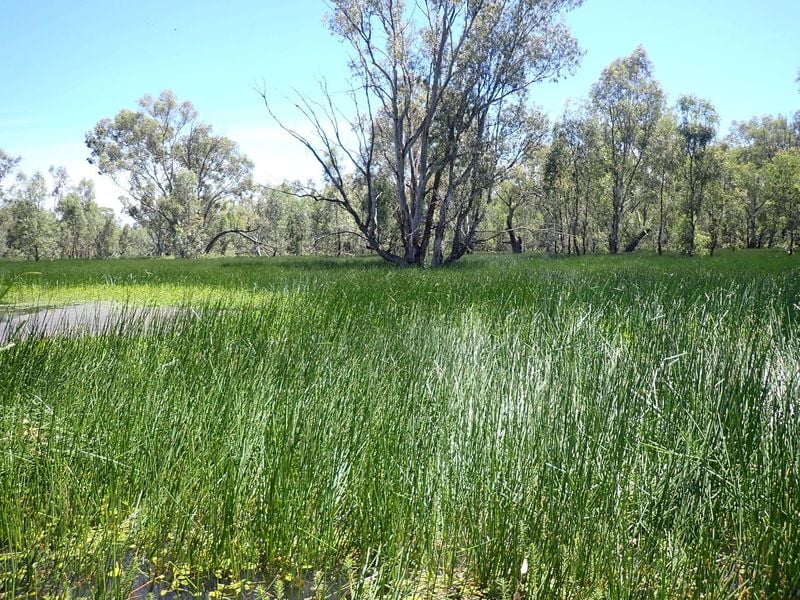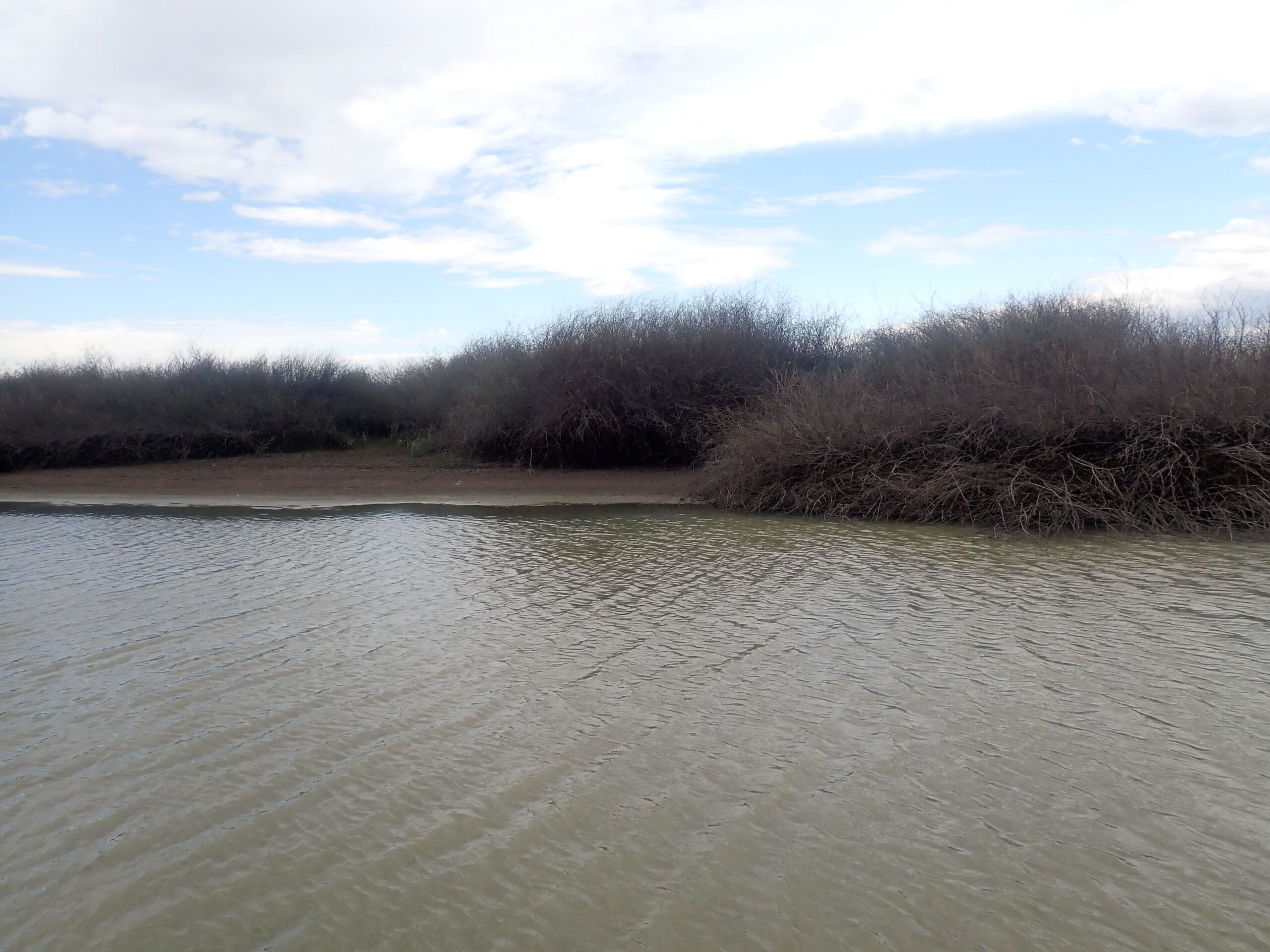Investigating the water requirements of the endangered Australasian bittern
By Skye Wassens (CSU), Elizabeth Znidersic (CSU), Sarah Talbot (CSU), Andrew Hall (CSU), Jennifer Spencer (DCCEW), and Helen P. Waudby (DCCEW)
Detecting Australasian bitterns can be a challenge. They are listed as Endangered in Australia with only 1300 estimated left in the wild nationally. They are elusive and well-camouflaged, nest amongst dense wetland vegetation, and male bitterns call at night for part of the year. Charles Sturt University (CSU) researchers and NSW Department of Climate Change, Energy, the Environment and Water (DCCEEW) scientists have collaborated in a project funded by the Commonwealth Environmental Water Holder (CEWH) to investigate the relationship between the timing and duration of water for the environment deliveries and bittern calling activity.



Audio recorders have been deployed by CSU at twelve key wetlands in the Lower Murrumbidgee wetlands since 2016 (Figure 1, 2 and 3). Data collected from five of these call recorders were screened for bittern calling activity. Over 7000 days of usable audio data was collected from the five sites.
Processing of audio data was completed using open-access software package Ecoacoustics Analysis Programs to produce figures that can be interpreted visually. Four measures of one-minute segments can be derived and used in analysis to produce long-duration, false-colour spectrograms (Figure 4.). These include a measure of the relative change in acoustic intensity, a measure of the dispersal of acoustic energy, a measure of the number of acoustic events per minute in each frequency and the maximum decibel of each. Depending on the proximity of the bittern to the call recorder, the bittern boom could range from 120-150 Hz with a bandwidth of 30-60 Hz. Therefore, this range could be used to search for the presence of bittern calls in the data.

Flow conditions varied considerably over the six watering years during which this data was gathered. Commonwealth and NSW environmental watering actions were delivered during this time depending on the rainfall in the catchment and inundation requirements in key wetlands.
Australasian bitterns were detected from audio recordings at five wetlands: Nap Nap, Bala swamp and Bayil creek in Gayini Nimmie-Caira and Two Bridges and Mercedes swamp in Yanga National Park. Long periods of calling were likely to be associated with breeding events at Bala, Bayil and Two Bridges with shorter periods detected at Nap Nap and Mercedes. Unregulated floodplain inundation in 2021-22 at Two Bridges resulted in the longest calling period, which spanned 101 days.
Analysis of the call frequency with wetland depths found that the probability of calling increased with increasing depth. The plot below shows when calling occurs (black vertical lines) in relation to water depth (black horizontal line) (Figure 5.)

Bittern calling was associated with larger watering actions of longer durations. This relationship was strongest at Gayini Nimmie-Caira where flows associated with bittern calling were more than twice the size of flow events that were not associated with calling.
Another key feature of the five wetlands in which calling activity was detected, included a high cover of lignum or tall spike rush, which provides suitable nesting habitat in the Low bidgee Floodplain.
The delivery of environmental water is critical to ensure provision of breeding, foraging and refuge habitats for Australasian bitterns. In wetlands where bittern breeding is likely, water levels need to be maintained for at least 6 months while nesting occurs. Wetlands should be filled in August or September and relatively stable water levels held from October to February Where possible, it is important to inundate shallow wetland habitats adjacent to priority breeding sites to maintain adequate foraging. It is also important that sudden rises or falls in water levels do not occur during the peak nesting period to protect eggs and immobile young chicks from drowning or predation from ground predators.
This project demonstrates the importance of continuous monitoring of Australasian bittern calling activity in response to environmental water delivery. Early identification of potential breeding events using acoustic monitoring, including potential deployment of telemetered units with real time detection capability, coupled with targeted on-ground monitoring will enable responsive watering strategies to maximise the potential for recruitment success.
The Murrumbidgee is a lowland river system with large meandering channels, wetlands, lakes, swamps and creek lines. Our work here focuses on understanding how native fish, waterbirds, reptiles and amphibians, as well as wetland vegetation communities, benefit from these targeted environmental watering actions.


The information on this website is presented by the Department of Climate Change, Energy, the Environment and Water (the Department) for the purposes of disseminating information to the public. It does not constitute legal or other professional advice.
The views and opinions expressed on this website are those of the authors and do not necessarily reflect those of the Australian Government or the Portfolio Ministers for the Department or indicate a commitment to a particular course of action.
While reasonable efforts have been made to ensure that the contents of this website are factually correct, the Commonwealth of Australia does not accept responsibility for the accuracy or completeness of its contents. The Department disclaims liability, to the extent permitted by law, for any liabilities, losses, damages and costs arising from any reliance on the contents of this website. You should seek legal or other professional advice in relation to your specific circumstances.
Use of this website is at a user’s own risk and the Department accepts no responsibility for any interference, loss, damage or disruption to your computer system which arises in connection with your use of this website or any linked website.